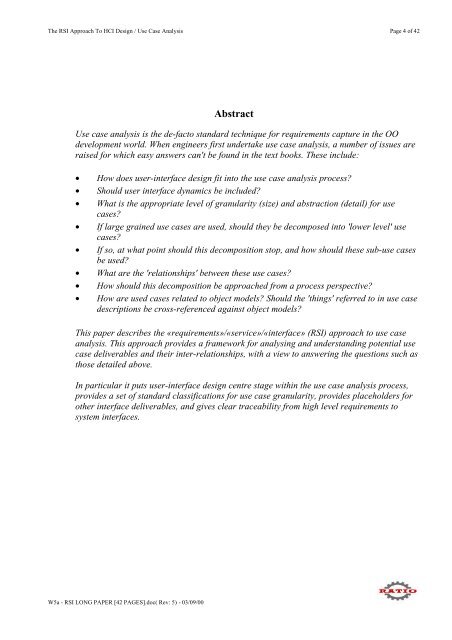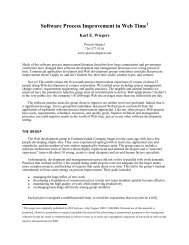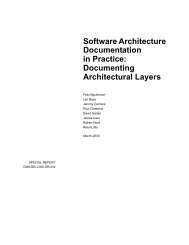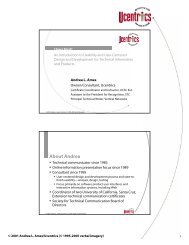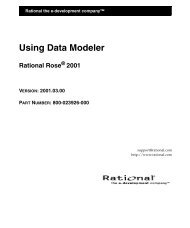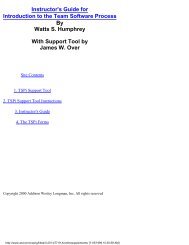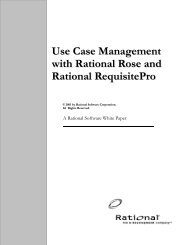RSI - A Structured Approach Use Cases and HCI Design
RSI - A Structured Approach Use Cases and HCI Design
RSI - A Structured Approach Use Cases and HCI Design
Create successful ePaper yourself
Turn your PDF publications into a flip-book with our unique Google optimized e-Paper software.
The <strong>RSI</strong> <strong>Approach</strong> To <strong>HCI</strong> <strong>Design</strong> / <strong>Use</strong> Case Analysis Page 4 of 42<br />
W5a - <strong>RSI</strong> LONG PAPER [42 PAGES].doc( Rev: 5) - 03/09/00<br />
Abstract<br />
<strong>Use</strong> case analysis is the de-facto st<strong>and</strong>ard technique for requirements capture in the OO<br />
development world. When engineers first undertake use case analysis, a number of issues are<br />
raised for which easy answers can't be found in the text books. These include:<br />
• How does user-interface design fit into the use case analysis process?<br />
• Should user interface dynamics be included?<br />
• What is the appropriate level of granularity (size) <strong>and</strong> abstraction (detail) for use<br />
cases?<br />
• If large grained use cases are used, should they be decomposed into 'lower level' use<br />
cases?<br />
• If so, at what point should this decomposition stop, <strong>and</strong> how should these sub-use cases<br />
be used?<br />
• What are the 'relationships' between these use cases?<br />
• How should this decomposition be approached from a process perspective?<br />
• How are used cases related to object models? Should the 'things' referred to in use case<br />
descriptions be cross-referenced against object models?<br />
This paper describes the «requirements»/«service»/«interface» (<strong>RSI</strong>) approach to use case<br />
analysis. This approach provides a framework for analysing <strong>and</strong> underst<strong>and</strong>ing potential use<br />
case deliverables <strong>and</strong> their inter-relationships, with a view to answering the questions such as<br />
those detailed above.<br />
In particular it puts user-interface design centre stage within the use case analysis process,<br />
provides a set of st<strong>and</strong>ard classifications for use case granularity, provides placeholders for<br />
other interface deliverables, <strong>and</strong> gives clear traceability from high level requirements to<br />
system interfaces.


